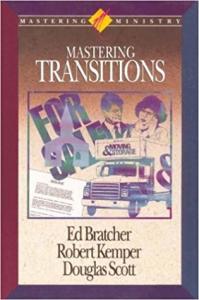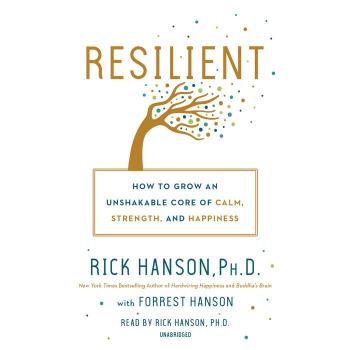Mastering Transitions by Ed Bratcher, Robert Kemper, and Douglas Scott is a comprehensive guide. The book shows what a minister should expect when they decide to move from one church to another, or one ministry to another. The book is divided into three parts. The first part of the book addresses “hearing the call.” Unique to Christianity is the idea that God calls a person to a ministry. This part of the book addresses how that happens. The three-step process of hearing a call.
Part 1: Hearing the Call
The first step in the process of hearing a call is to see if God is calling the minister when the church calls the minister. It is important to know if God is calling a minister to change places.
The second step in the process is learning how to deal with the candidate process. In secular positions, one is usually hired by a manager or someone in Human Resources. In ministry, candidates usually deal with a search committee. The search committee is usually made up of different people in the church. However, they will not necessarily make up people whom the candidate will regularly deal with after employment.
The third step is about coming to terms with the committee and the questioning process. This is the period of negotiating the terms of employment. Questions such as salary, housing, insurance, vacation, as well as other benefits can be addressed. These additional benefits may include a car allowance and expense account. Agreements are also delineated during this time. This will include the job description, performance review, and termination, continuing education, as well as vacation and study leave.
Part 2: Making a Move
At some time during a ministry, the pastor may sense that it is time to leave. During the end of the ministry, it is a time to “prepare to leave.” This can be a very emotional event. At the same time, when a pastor is called somewhere else, one is still the incumbent pastor until the last day of employment. It can be a time of reconciliation with people who have been alienation. One will get invited to receptions and farewell suppers.
Once the minister has left, the change begins. Moving right into a new location or form of service can be challenging. It is a time of anticipation. At the same time, it can feel very lonely. It is helpful to develop symbols or rituals to help deal with this new transition.
Making can move can also be uncomfortable when it is a forced termination. Anger can set in. Yet, this kind of dismissal still requires some form of negotiation. Therefore, it is important to keep one’s emotions in check. The reason is that the pastor is not the only one being fired, Firing affects the pastor’s family as well. Anger, shame, and doubt may set in. This kind of change still requires that the minister make a move. However, the pastor may be deeply hurt by this forced move. This new move can be a long process.
Part 3: Building a Ministry
Once a pastor has moved, it is time to build a new ministry. The first year of ministry becomes the most critical year in ministry. The minister needs to build mutual trust, hold off on change, and continue to preach to the best of their ability.
The First Year
As the pastor builds a new ministry, harnessing the church’s history is essential to success. The church’s history shows God at work. The history of the church creates community. This same history also shapes the church’s future. The pastor must learn the real history. If history can provide hope, it can also steal hope. The pastor can lead the church best by bringing the history of the church forward, make it present to the church, and also point the church to the future.
Challenges
One of the most difficult challenges is leading your new church in the shadow of your predecessor(s). The new pastor has to deal with selective congregational memories. Sometimes the predecessor long dead, and sometimes that person is literally present in the church. The new pastor has to learn how to deal with the predecessor. Preferably, it helps to make use of the predecessor.
Another difficult challenge is leading the church following a difficult pastorate. In trying to get the total story, the new pastor can learn that there are a variety of problems. There are a variety of leadership strategies a new pastor can use to help the church grow. For example, work with the church’s leadership, concentrate on preaching and visitation, combat the spirit of failure through constant encouragement, help the church to focus outward, and celebrate what is good in the church.
While leading the church through change, it is important to also preserve yourself. This may include spending more time in prayer, asking help from others in the church, finding other sources of renewal for yourself as a pastor, as well as exercise. Building a ministry is a long process. A pastor must accept that it will take time.
Part 4: Shaping the Future
The first few years of the pastorate are called the honeymoon. During this time, the church may accept the pastor. Yet, after the honeymoon, conflicts may arise that need resolving. While serving in the church, it is important that the pastor take care of himself. The reason is that these conflicts and other parts of ministry can be stressful.
Stress
Stress can really come when a pastor is confronted about his leadership. The pastor can fight or die. But the process involved gathering information from other people in the church and then telling the truth to the people who confronted the pastor in the first place. Secrets feed a church illness. Truth sets the church free.
While serving in a church, we may feel discouraged. The first response is a desire to flee. So a pastor may apply to lead another church. So much energy can be spent on that process that the pastor neglects the work in the present church. In times of crisis (marriage strain, financial burdens, children’s behavior, or poor health), it helps to seek out help from within the congregation. The congregation can be a source of help to the pastor.
A pastor may serve for a long time, whether in one ministry or many. Following a long time of service, the pastor may need to prepare for retirement. That includes preparing to leave the church. The pastor should give the church good warning. The church will feel stress and pressure during this time. The pastor can alleviate this pressure by making a few adjustments. For example, the pastor can also let the board lead. The minister should remember the congregation and protect the staff. During this time, it is important that the pastor doesn’t call attention to himself. In the end, the pastor should work well to the end and yet say goodbye well.
Retirement
A shift to retirement can be challenging. The pastor should be ready to really live during retirement. This includes being ready for any move. Retirement can be a challenge for ministers. One must be prepared financially, emotionally, and spiritually for this change. However, retirement can be fulfilling when it is fully embraced.
I found this book to be a comprehensive look at the life cycle of a minister. The book does a good job and preparing the minister for the transitions that may happen in their work. I highly recommend this book for pastors as well as people who are interested in serving in the ministry.
You can find this book on Amazon, Google, and Logos.
You can check out my reviews of other books related to pastoral ministry:
Lead Like Jesus by Ken Blanchard and Phil Hodges
Your Signature Work by Dianna Booher
Managing Through People by Dale Carnegie and Associates
Being Leaders by Aubrey Malphurs
Super-Vision: Developing and Directing People on Mission by Doran McCarty
Survival Tactics in the Parish by Lyle Schaller
Leadership As a Lifestyle by John Hawkins
















